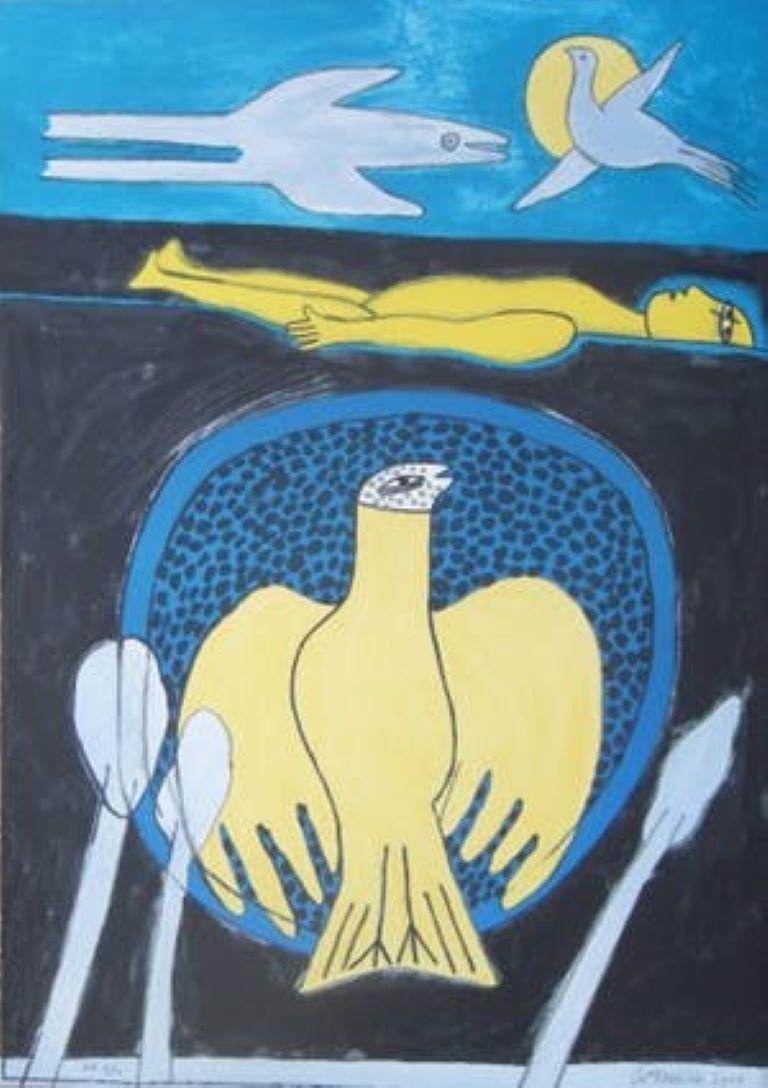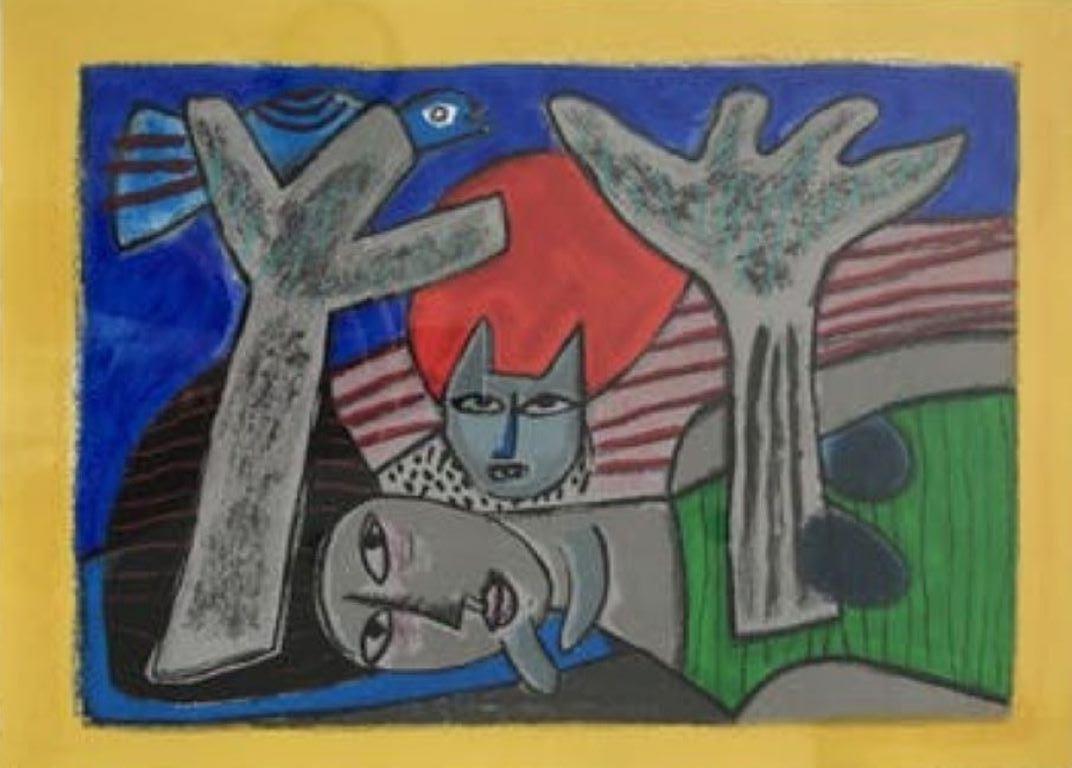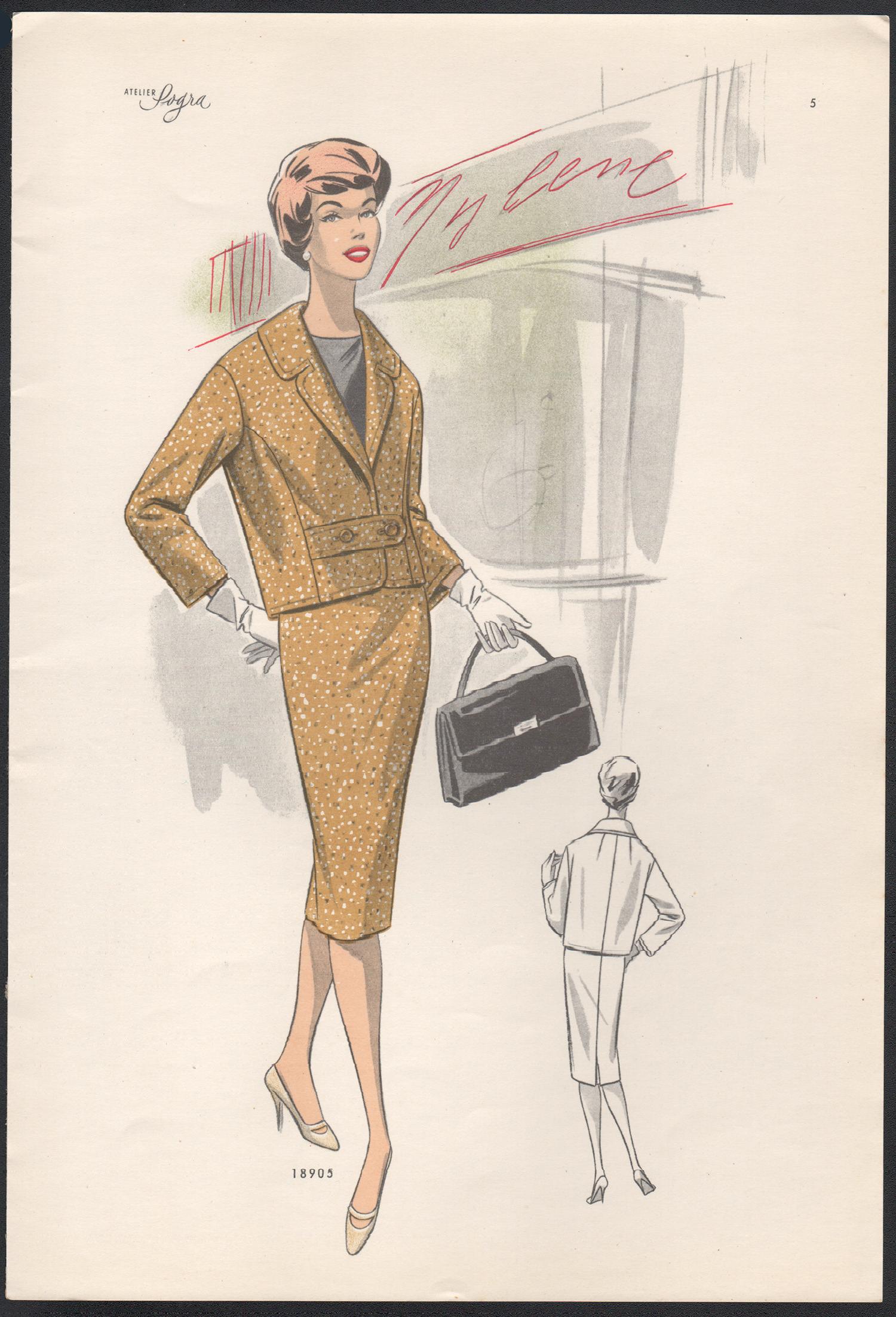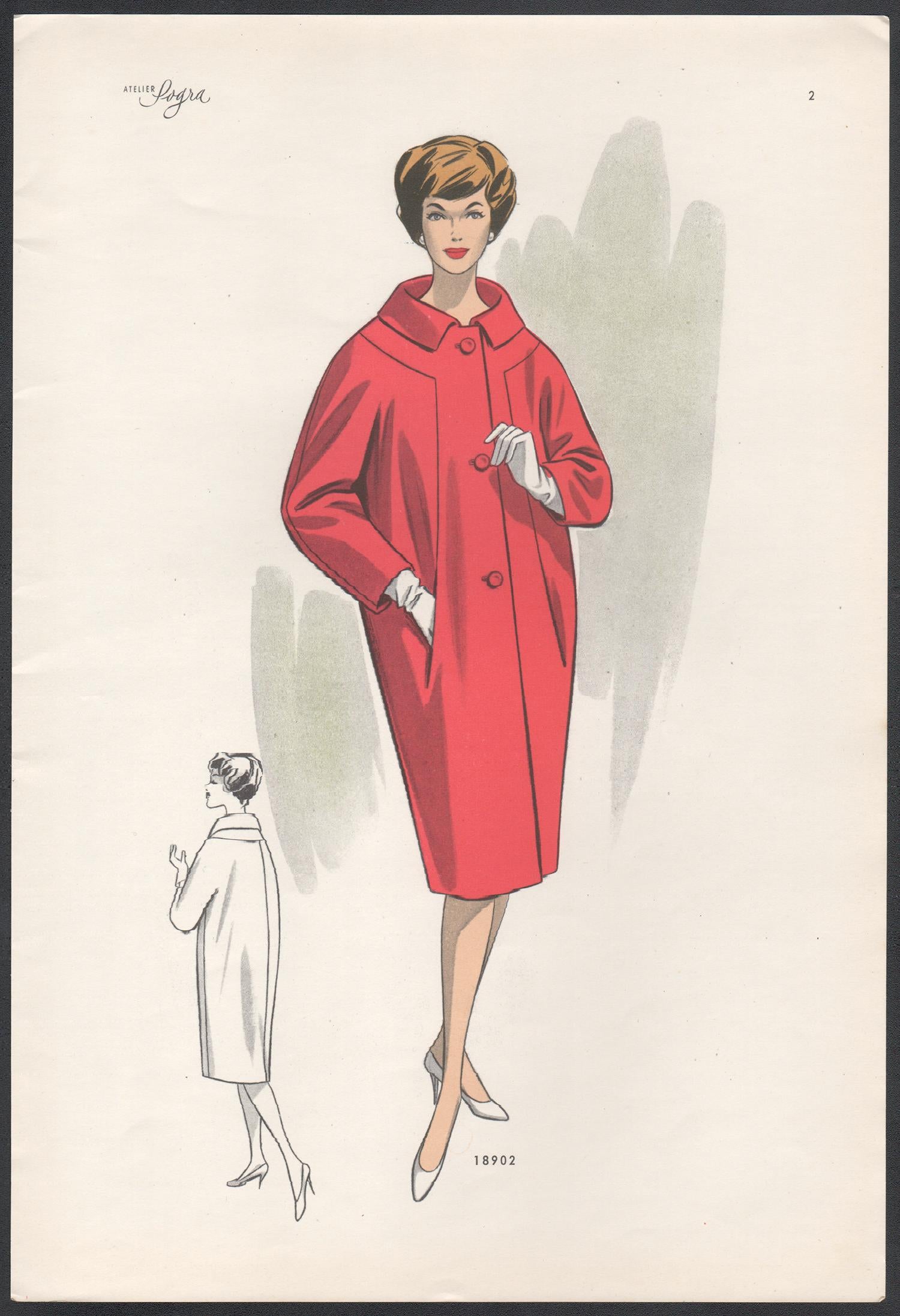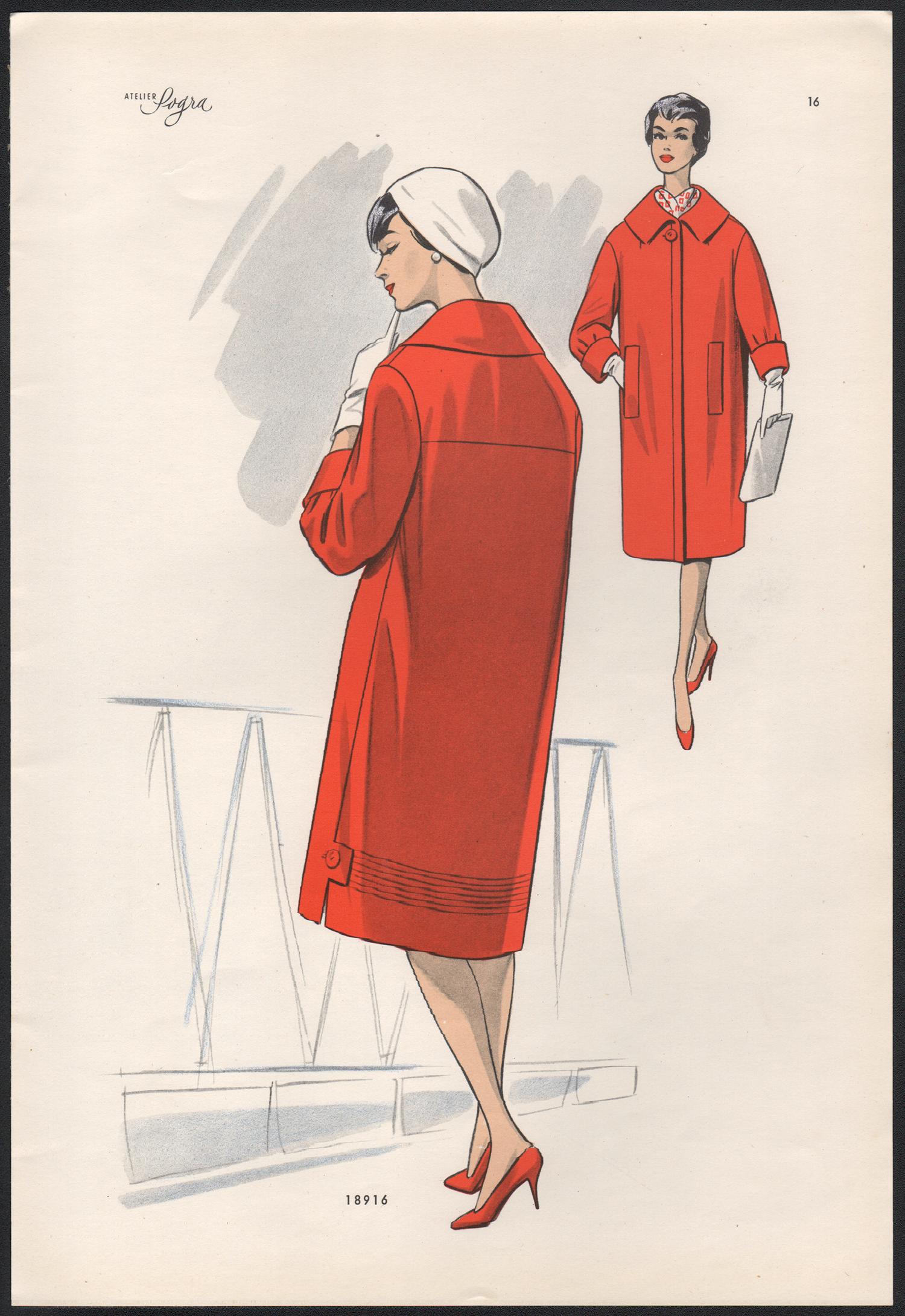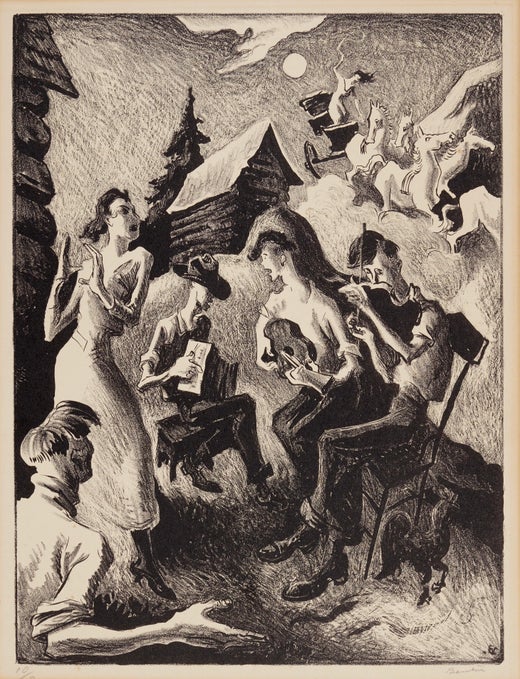Items Similar to 'Instruction' 1940
Want more images or videos?
Request additional images or videos from the seller
1 of 5
Thomas Hart Benton'Instruction' 19401940
1940
About the Item
THOMAS HART BENTON (American, 1889-1975)
"Instruction", 1940
Lithograph on paper
10-1/4 x 12-1/4 inches (26.0 x 31.1 cm) (image)
Ed. 250
Signed in lower right margin: Benton
Published by Associated American Artists, New York
LITERATURE:
Fath 41, The Lithographs of Thomas Hart Benton, Austin, and London, 1969 and 1979, no. 41, p. 102, illus. p. 103.
The artwork is in excellent condition.
Named after his great-uncle, a five-term senator, Thomas Hart Benton was born on April 15, 1889, in Neosho, Missouri. His father, Maecenus Eason Benton, was a lawyer and a United States representative from 1896 to 1904, so the young Benton spent his early years in both Washington, DC, and southwest Missouri. Benton dropped out of high school at 17 and started working as a cartoonist for the Joplin American newspaper. His mother, Elizabeth Wise Benton, was supportive of his artistic ambitions, but Benton’s father enrolled him in the Western Military Academy in Alton, Illinois, in 1906 before agreeing to allow him to attend the Art Institute of Chicago in 1907. The following year Benton traveled to Paris and studied at the Académie Julian. There he met California artist Stanton Macdonald-Wright (American, 1890 - 1973) and began to experiment with Macdonald-Wright’s synchromist style of abstract painting. In 1911 he returned to the United States and settled in New York. He taught briefly at the Chelsea Neighborhood Association, where he met his future wife, Rita Piacenza, one of his students. During World War I Benton served at the naval base in Norfolk, Virginia, where he made illustrations for a catalog of ships and military equipment. After the war Benton went back to New York, and in 1922 he married Piacenza. The couple was married for 53 years and had two children. They regularly spent summers on Martha’s Vineyard, Massachusetts.
Benton’s work until the early 1920s was generally modernist and often abstract. In 1924, however, Benton traveled to Missouri to see his sick father. Returning to his home state inspired him to reclaim his midwestern roots and break with modernism, focusing instead on American rural subjects such as life in steel mills, logging camps, coal mines, and cotton fields. Because of his leftist political leanings he championed working class people and represented them as heroes in his paintings and murals. Benton began to paint in a naturalistic style that was influenced by the Spanish master El Greco (Greek, 1541 - 1614), and he became known as the most innovative practitioner of mural painting in a decade of great importance for this medium in America. He completed monumental mural cycles for the New School for Social Research (America Today, 1930–1931, Metropolitan Museum of Art), the Whitney Museum of American Art (The Arts of Life in America, 1932, New Britain Museum of American Art), and the 1933 Chicago World’s Fair (The Social History of Indiana, Indiana University), all of which aroused controversy because of their political content. By December 24, 1934, when Benton became the first artist to have a work (a self-portrait) featured on the cover of Time magazine, he was regarded as one of the three leading American regionalist painters, along with Grant Wood (American, 1891 - 1942) and John Steuart Curry (American, 1897 - 1946). Throughout this period Benton was an influential teacher at the Art Students League in New York, where Jackson Pollock (American, 1912 - 1956) was one of his students.
In 1935 Benton left New York and permanently settled in Kansas City, Missouri, where he taught at the Art Institute. His first major project there was a mural for the Missouri State Capitol, A Social History of the State of Missouri (1936). During this period Benton also completed oil paintings, including two classical nudes in midwestern settings—Susanna and the Elders (1938, Fine Arts Museums of San Francisco) and Persephone (1938–1939, Nelson-Atkins Museum of Art, Kansas City, MO)—and more traditional regionalist subjects such as July Hay (1943, The Metropolitan Museum of Art). He published his autobiography, An Artist in America, in 1937. The Nelson-Atkins Museum of Art and the Associated American Artists Gallery in New York held a successful retrospective of Benton’s work in 1939. However, Benton’s frequent controversial statements and harsh criticisms of the Kansas City art establishment resulted in his being fired from the Art Institute in 1941, and enemies frequently attacked his work for being vulgar and unpatriotic. After World War II regionalism fell out of fashion, but Benton continued to paint rural subjects for the next 30 years, including a number of mural commissions. These later works generally lack social commentary and are nostalgic views of the preindustrial Midwest. Benton died of a heart attack on January 19, 1975, in Kansas City, just after putting the finishing touches on a large mural for the Country Music Hall of Fame in Nashville, Tennessee.
- Creator:Thomas Hart Benton (1889-1975, American)
- Creation Year:1940
- Dimensions:Height: 10 in (25.4 cm)Width: 12 in (30.48 cm)Depth: 1 in (2.54 cm)
- Medium:
- Movement & Style:
- Period:
- Condition:
- Gallery Location:Pembroke Pines, FL
- Reference Number:1stDibs: LU2382213474982
Thomas Hart Benton
Thomas Hart Benton was born in Neosho, Missouri on April 15, 1889. Even as a boy, he was no stranger to the "art of the deal" or to the smoke-filled rooms in which such deals were often consummated. His grandfather had been Missouri's first United States Senator and served in Washington for thirty years. His father, Maecenas Benton, was United States Attorney for the Western District of Missouri under Cleveland and served in the United States House of Representatives during the McKinley and Theodore Roosevelt administrations. Benton's brother, Nat, was prosecutor for Greene County, Missouri, during the 1930s. As soon as he could walk, Benton traveled with his father on political tours. There he learned the arts of chewing and smoking, and while the men were involved in their heated discussions, Benton delighted in finding new cream colored wallpaper on the staircase wall, at the age of six or seven, and drew in charcoal his first mural, a long multi-car freight train. As soon as he was eighteen, even though his father wanted him to study law, Benton left for Chicago where he studied at the Art Institute during the years 1907 and 1908. He continued his studies in Paris, where he learned delicious wickedness, aesthetic and otherwise. Once back home, he became the leader of the Regionalist School, the most theatrical and gifted of the 1930s muralists and as Harry Truman described him,"the best damned painter in America." Detractors said that Benton was "a fascist, a communist, a racist and a bigot"; the ingenious structure, powerful use of modeling and scale and the high-colored humanity of the murals and easel paintings are retort enough. He was a dark, active dynamo, only 5 ft., 3 1/2 in. tall. He was outspoken, open, charmingly profane; he had a great mane of hair and a face the texture of oak bark. He wore rumpled corduroy and flannel, and walked with the unsteady swagger of a sailor just ashore. He poured a salwart drink, chewed on small black cigars and spat in the fire. Benton was once described as the "churlish dean of regionalist art." If you listened to a variety of art authorities, you would find them equally divided between Harry Truman's assessment of Benton as "the best damned painter in America" and Hilton Kramer who proclaimed Benton "a failed artist." The East Coast art establishment tended to regard Benton as memorable for one reason only: he was the teacher of Jackson Pollock. Benton was married in 1922 to Rita, a gregarious Italian lady, and they had a daughter and a son. At the height of his fame in the 1940s, Benton bungled the buy-out he was offered by Walt Disney and went his own way, completing his last mural in 1975 in acrylics the year of his death. He died in 1975.
About the Seller
5.0
Platinum Seller
These expertly vetted sellers are 1stDibs' most experienced sellers and are rated highest by our customers.
1stDibs seller since 2023
70 sales on 1stDibs
Typical response time: 4 hours
- ShippingRetrieving quote...Ships From: Pembroke Pines, FL
- Return PolicyA return for this item may be initiated within 14 days of delivery.
More From This SellerView All
- MARC CHAGALL "FIANÇAILLES AU CIRQUE - 1983"By Marc ChagallLocated in Pembroke Pines, FLMARC CHAGALL (1887-1985) "Fiançailles au Cirque" lithograph in colours, 1983, on wove paper. Signed in pencil, Numbered 18/50 in pencil Image 455 x 350 mm. Sheet 650 x 478 mm. LITERA...Category
1980s Contemporary Figurative Prints
MaterialsLithograph
- MARC CHAGALL "MONDE FAMILIER - 1983"By Marc ChagallLocated in Pembroke Pines, FLMARC CHAGALL (1887-1985) "Monde familier" lithograph in colours, 1983, on wove paper. Signed in pencil, Numbered 23/50 in pencil Image 350 x 270 mm. Sheet 545 x 430 mm. LITERATURE: M...Category
1980s Contemporary Figurative Prints
MaterialsLithograph
- Pop Star, 2006 - FramedBy Tom EverhartLocated in Pembroke Pines, FLTom Everhart "Pop Star" 2006 Original Limited Edition Lithograph on Rives BFK paper Edition Size: 500, plus proofs. Paper Size: 18 x 26.5 inches. Framed Size...Category
Early 2000s Pop Art Figurative Prints
MaterialsLithograph
- Drama Queen, 2006 - FramedBy Tom EverhartLocated in Pembroke Pines, FLTom Everhart Original Limited Edition Lithograph on Rives BFK paper 2006. Edition Size: 500, plus proofs. Paper Size: 21.5 x 31 inches. Framed size Approx.: 30 x 40 Inches Publish...Category
Early 2000s Pop Art Figurative Prints
MaterialsLithograph
- These Things Are Good ThingsBy (after) Dr. Seuss (Theodore Geisel)Located in Pembroke Pines, FLDr Seuss THEODOR GEISEL "These Things are Good Things" 2013 Limited Edition - Fine Art Pigment Print on Acid-Free Paper Edition Size: # / 2500 Signed: Signed in the plate Condition: ...Category
2010s Pop Art Figurative Prints
MaterialsGiclée, Lithograph, Digital Pigment
- MARC CHAGALL "DAY BREAK - 1983"By Marc ChagallLocated in Pembroke Pines, FLMARC CHAGALL (1887-1985) "Day Break" lithograph in colours, 1983, on wove paper. Signed in pencil, Numbered 26/50 in pencil 21.5 x 17 Inches. LITERATURE: Mourlot 1014 CONDITION: Exce...Category
1980s Contemporary Figurative Prints
MaterialsLithograph
You May Also Like
- Vrouw met duif - Cobra, 20th century, Lithograph, Figurative Print, EABy Guillaume Cornelis van Beverloo (Corneille)Located in Sint-Truiden, BEGuillaume Corneille Lithograph 70 x 50 cm Epreuve d'artiste op 10 exemplaren EA 6/10 Corneille was one of the founders and one of the most important representatives of the Cobra move...Category
Late 20th Century Post-War Figurative Prints
MaterialsLithograph
- Vrouw met kat en vogel - Cobra, 20th Century, Lithograph, Figurative Print, HCBy Guillaume Cornelis van Beverloo (Corneille)Located in Sint-Truiden, BEGuillaume Corneille Lithograph 40 x 50 cm Hors Commerce HC Gesigneerd Corneille was one of the founders and one of the most important representatives of the Cobra movement. He was a ...Category
Late 20th Century Post-War Figurative Prints
MaterialsLithograph
- European Mid-Century 1959 Fashion Design Vintage Lithograph PrintLocated in Melbourne, VictoriaEuropean fashion design from the 'Atelier Sogra', published in Vienna. 325mm by 220mm (sheet)Category
Mid-20th Century Post-War Figurative Prints
MaterialsLithograph
- European Mid-Century 1959 Fashion Design Vintage Lithograph PrintLocated in Melbourne, VictoriaEuropean fashion design from the 'Atelier Sogra', published in Vienna. 325mm by 220mm (sheet)Category
Mid-20th Century Post-War Figurative Prints
MaterialsLithograph
- European Mid-Century 1959 Fashion Design Vintage Lithograph PrintLocated in Melbourne, VictoriaEuropean fashion design from the 'Atelier Sogra', published in Vienna. 325mm by 220mm (sheet)Category
Mid-20th Century Post-War Figurative Prints
MaterialsLithograph
- European Mid-Century 1959 Fashion Design Vintage Lithograph PrintLocated in Melbourne, VictoriaEuropean fashion design from the 'Atelier Sogra', published in Vienna. 325mm by 220mm (sheet)Category
Mid-20th Century Post-War Figurative Prints
MaterialsLithograph
Recently Viewed
View AllMore Ways To Browse
Spanish 1940
P War
British Military Prints
Vintage Greek Music
P Camp
Nelson Fire
American Vintage Cycle
Martha Washington
Currier Print
Lawyer Portrait
Southwest Lithographs
Vintage Lawyer Prints
Illustration Vintage Camping
Benton Lithograph
Grant Wood Lithographs
Marthas Vineyard Vintage
Logging Oil Painting
British Military Oil Paintings
